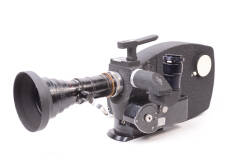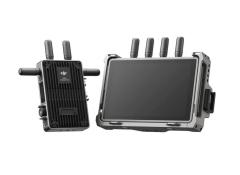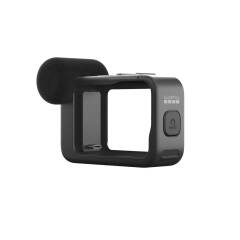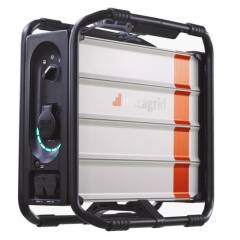Categories
Why EcoFlow and Instagrids are finding their way onto more and more Film Sets
Film sets are power-hungry environments. From lights to monitors to charging stations, reliable energy is essential to keep production moving. Traditionally, petrol and diesel generators have been the go-to solution—but in recent years, portable battery systems like EcoFlow power stations and the Instagrid Max have become a compelling alternative.
It’s been an interesting shift and there are positives and negatives, as well as certain things to take note of prior to deciding if they’re the right solution for your need.
Advantages of EcoFlow Battery Banks
- Silent Operation
Generators are notoriously loud, which can disrupt sound recording and create constant background noise. EcoFlow units run silently, making them ideal for sets where dialogue is being captured. - Clean Energy
Unlike fuel-based generators, EcoFlow banks produce no fumes, meaning they can safely be used indoors, in tight spaces, or on location without polluting the environment. - Portability and Setup
Battery banks are lighter, more compact, and easier to move around than bulky generators. There’s no need to cordon off areas for exhaust clearance or store fuel on-site. They can be stowed on lower shelves of Magliners creating a portable battery charging station to wheel around studios or on set. - Instant Power
With an EcoFlow, you simply plug in and go—no warm-up times, no fuel priming, and no oil checks. This simplicity can save valuable minutes on a busy shoot day. - Sustainability Credentials
Many productions are under pressure to reduce their carbon footprint and seek the Albert Accrediation. Using battery power over fossil fuels not only lowers emissions but also demonstrates a commitment to greener filmmaking, giving a huge step towards Filming Albert Accreditation.
The Drawbacks
While EcoFlow batteries are highly convenient, they aren’t without limitations:
- Limited Run Time: Once the charge runs out, you can’t just “top up” instantly. Charging can take a few hours, which may be a problem on long shoots without access to mains or solar. Multiple units can of course be utilised so when one runs low you can put it on to charge and use the other, hot swapping throughout the days, but this takes a bit of management and with so much to think about on set, people may be reluctant to add to that.
- Power Capacity: High-demand equipment (large lights, heavy rigs) can drain batteries quickly, meaning you may need multiple units to match the output of a generator. There is also a maximum draw which is far far less than many generators – we’ll get into the maths of that shortly.
- Dependency on Charging Infrastructure: Unlike a jerry can of fuel, recharging requires access to the grid or a solar array, which may not always be practical in remote locations.
Is it right for you – a simple guide to power draw and run times
Both the Ecoflow, Instagrid and other similar models rely on giving a figure called Watt-hours. This is industry standard measure for how many watts can be drawn off a battery per hour before it runs out.
The Instagrid Max One has 2100 watt-hour whilst the Ecoflows have 1600-2000 watt-hour (depending on the model type). Ecoflow also do a range of much smaller, lower capacity models, but we’ll leave them out of the discussion for now as we want to focus on the ability to power the most popular industry lights and accessories.
It’s usually fairly easy to discover the draw (watts) for filming equipment, with many lights in particular usually having the power (watts) as part of the name (ie. The Aputure 300x draws 300w, the 600x draws 600w). For the more classic tungsten lights the Arri 300w fresnel, 650w fresnel.. you can see where this goes)
Small devices such as smaller monitors may be trickier to discover, but in honesty they draw so little the maths becomes almost negligable, so we will focus on the bigger numbers which will go into whether it becomes viable for the setups or not.
Calculating Run Time
To get your run time, you take the Watt-hour of the battery, and simply divide by the watt draw of the devices you plan to run – this gives your run time.
For this example we will use our Instagrid Max One, and a couple of our more popular lights.
Instagrid Max One – 2100 watt-hour
Aputure 600x – 600w
2x Aputure 300x – 600w
4x Aputure 60x – 240w
Lets add in 13″ monitor at approx 40w (specs vary but this is more-or-less)
Total draw (all running, max power = 1480w
All running at once, on full power, 2100 / 1480 = 1.4 hours.
So that gives you a rough idea of whether this battery will support and how long it will run. Dimmable lights will mean it draws less, so will run for longer, but if you work on the assumption you’ll be at max power, there will be no surprises.
Another thing to look at is max draw – so the most which can run at once. This is where the generators are hugely more popular, with gigantic maximum draws. Instagrids and Ecoflows run on similar numbers to UK power ring mains, the instagrid offering a bit more but a max draw of 3600W. This means your total power your drawing at once cannot exceed this. This does mean you can run a lot – but not an Arri 5K or anything similar to that. For the big big lights, you’ll still need to stay with a generator.
Which is right for you?
I hope these rough calculations have been helpful in deciding whether the battery power solution is the way to go.
As a basic rule of thumb, we find that most setups you were planning to do in someone’s living room would be good to run from one of these for well over an hour. If you’re using much higher draw things, or need to run for 2-3 hours, it may not be for you.
If you are unsure feel free to give any of our offices a call with which equipment you’re looking to run, and we’ll happily help calculate your run time, to help you make the decision on whether these portable battery power stations are the right solution for you.




